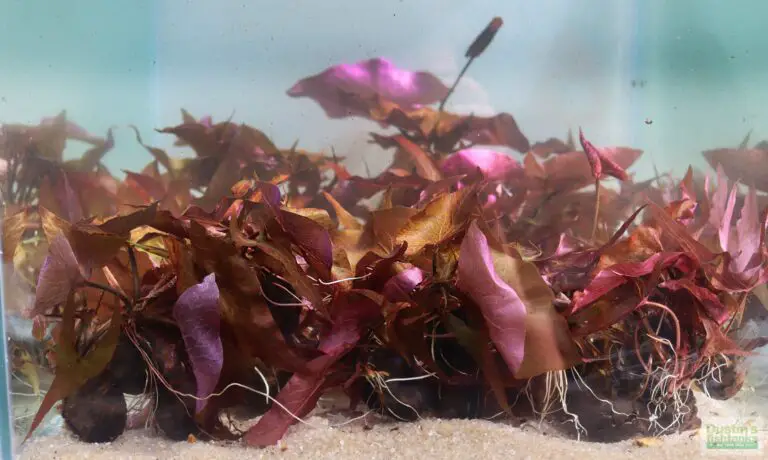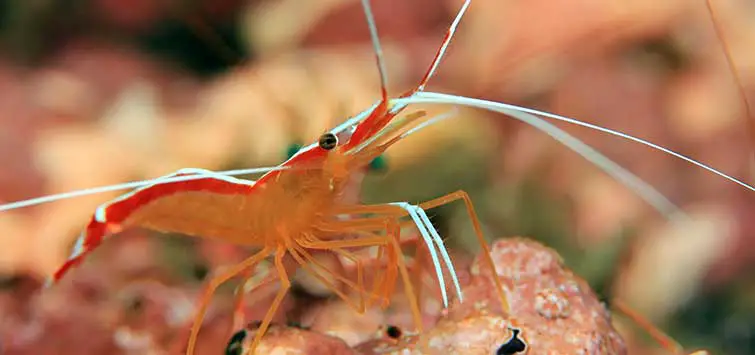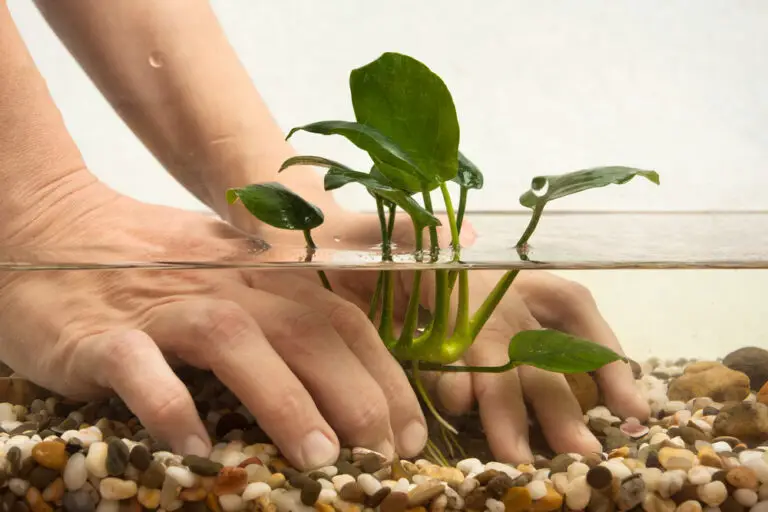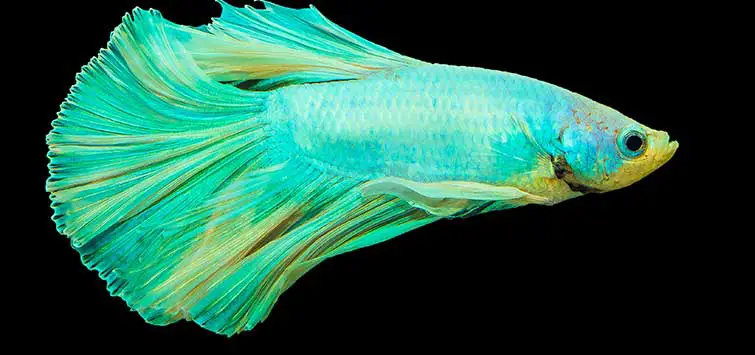Fastest Growing Aquarium Fish
Aquariums are a great way to bring the beauty of nature into your home and the fastest growing aquarium fish can help you create an underwater oasis in no time. These fish are perfect for beginners and experienced aquarists alike and will add some serious flair to your tank. So, if you’re looking to add some new life to your aquarium, consider one of these fast-growing fish:
Angelfish are a popular choice for many aquarists due to their beautiful fins and elegant swimming movements. They’re also one of the fastest growing aquarium fish, reaching up to 6 inches in just a few months. Angelfish require at least a 30-gallon tank and should be kept with other peaceful community fish.
Another fast-growing aquarium fish is the Guppy. These brightly colored little fish are very easy to care for and can reach sizes up to 2 inches within a few months. Guppies do best in groups of at least 5 or 6 and require a minimum tank size of 10 gallons.
If you’re looking for some new fish to add to your aquarium, you may want to consider some of the fastest growing fish. These fish include guppies, mollies, swordtails, and platies. They can grow up to an inch per month, so they’ll quickly fill up your tank!
Guppies are a popular choice for many aquarium enthusiasts because of their bright colors and playful personalities. They’re also easy to care for and don’t require a lot of space. Mollies are another good option if you’re looking for lively fish that are relatively low-maintenance.
Swordtails and platies are also fun additions to any tank – just be sure not to overcrowd your aquarium!
Top 10 Aquarium Fish that grows to Large Sizes
Fastest Growing Fish Freshwater
If you’re looking for a fast-growing fish to add to your freshwater aquarium, consider one of these top species. All of them have the potential to grow quickly, provided they are well-cared for and have plenty of space to swim.
Tilapia is perhaps the best known of the fast-growing fish.
They are hardy and relatively easy to care for, making them a good choice for beginner aquarists. What’s more, they grow quickly – up to 24 inches (61 cm) in length in some cases.
Another good option is the common carp.
Like tilapia, they can reach a sizable length – up to 36 inches (91 cm). They are also fairly easy to care for, although they can be messy eaters so you’ll need to keep an eye on water quality if you have them in your aquarium.
For something a little different, check out the pacu fish.
Pacus are actually related to piranhas and can grow quite large – up to 4 feet (122 cm) long! They are generally peaceful towards other tank mates but their size means they need plenty of space to swim around, so make sure your aquarium is big enough before adding one of these impressive fish.
Drugs That Makes Fish Grow Faster
As the world’s population continues to grow, so does the demand for seafood. To meet this demand, fish farmers are constantly looking for ways to increase their production. One method that is gaining popularity is the use of growth-promoting drugs.
Growth-promoting drugs are typically hormones that stimulate the fish’s metabolism and cause them to grow at a faster rate. The most common of these drugs is called salmon calcitonin, which is derived from salmon DNA. When injected into fish, it causes them to grow up to three times faster than normal.
While growth-promoting drugs can be beneficial for fish farmers, there are some potential risks involved. One worry is that these drugs may end up in the human food supply, where they could potentially have harmful effects on our health. Another concern is that overuse of these drugs could lead to antibiotic resistance in fish, making it more difficult to treat diseases in both humans and animals.
Despite these concerns, growth-promoting drugs are likely here to stay asfish farming continues to expand around the world.
Fish Growth Time
Are you curious about how long it takes for fish to grow? The answer may depend on the type of fish, as well as the environment in which they are living. For example, fast-growing fish like tilapia in warm water can reach adult size in just a few months, while slower-growing species like salmon may take several years to mature.
There are a number of factors that affect fish growth rates, including temperature, food availability, and predation pressure. In general, warmer water temperatures lead to faster growth rates, as fish are able to metabolize food more quickly at higher temperatures. Additionally, an abundance of food can also lead to faster growth rates as fish have more energy available for growth.
Finally, predation pressure can also impact growth rates; if fish are constantly being eaten by predators, they may not have the opportunity to reach their full potential size.
So next time you’re wondering how long it took that big bass to grow so large, remember that there’s no simple answer – it depends on a variety of factors!
Large Freshwater Aquarium Fish
Whether you’re looking for an impressive center piece fish or a school of smaller fish to add some color and activity to your tank, following fish have what you need.
Some of the most popular large freshwater aquarium fish include:
Angelfish: Angelfish are one of the most popular choices for freshwater aquariums. They come in a wide variety of colors and patterns and can grow up to 12 inches in length.
Angelfish require a well-planted tank with plenty of hiding places and should be kept with other peaceful community fish.
Discus: Discus are another popular choice for freshwater aquariums. They are beautiful, brightly colored fish that can grow up to 8 inches in length.
Discus prefer warm water (around 86 degrees Fahrenheit) and should be kept in a species only tank or with other peaceful community fish that can tolerate warmer temperatures.
Oscars: Oscars are one of the largest freshwater aquarium fish available, growing up to 18 inches in length! They are hardy fish that can tolerate a wide range of water conditions but prefer slightly warmer water (around 78 degrees Fahrenheit).
Oscars are generally very friendly and can even be trained to eat from your hand! However, they require a very large tank (at least 125 gallons) and should not be kept with smaller fishes since they may view them as food items.
How to Grow Fish?
If you’re looking to add some fish to your home, whether for food or as pets, there are a few things you need to know about growing them. Here’s a guide on how to grow fish. The first thing you need to do is choose the right location.
You’ll need an area that has access to fresh water and plenty of sunlight. If you’re growing fish for food, make sure the area is also free of predators. Next, you’ll need to prepare the area by clearing any debris and weeds.
You’ll also want to create a sloped bank so that the water can drain properly. Once the area is prepared, you can start digging your pond. The depth and size of the pond will depend on the type of fish you’re planning on growing.
Make sure there are plenty of places for the fish to hide and swim around. After your pond is built, it’s time to fill it with water. You can use tap water, but it’s best to let it sit for a few days so that any chemicals can dissipate before adding your fish.
If using well water, have it tested first to ensure it’s safe for fish. Now it’s time to add your fish! Choose fingerlings or fry from a local hatchery or pet store. Don’t try catching wild fish as they may not be accustomed to captivity and could introduce diseases into your pond.
Add just a few at first and monitor their growth before adding more later on. As your fish grow, they will produce waste which will impact the quality of the water in your pond.
How Fast Do Fish Grow Aquarium?
Aquarium fish have different growth rates, which are determined by many factors such as species, genetics, water quality, and diet. In the wild, most fish grow slowly and steadily throughout their lives. However, in captivity, where conditions are often ideal, fish can grow much faster.
For example, goldfish typically grow to about 10 inches (25 cm) in the wild. But in an aquarium with good care, they can easily reach 12-16 inches (30-40 cm). Likewise, guppies in the wild might only grow to be an inch or two long.
But under aquarium conditions, they can quickly reach 2-3 inches (5-7.5 cm).
Of course, not all fish will grow at the same rate in captivity. Some species simply don’t grow as fast as others.
And even within a species there can be variation based on individual genetics and other factors. So it’s important to do some research on your particular type of fish before you purchase them for your aquarium.
Generally speaking though, most aquarium fish willgrow significantly faster than their wild counterparts.
So if you’re looking for fish that will quickly reach a good size, look for ones that are commonly kept in home aquariums!
Fastest Growing Fish in Pond
If you’re looking to add fish to your pond that will grow quickly, there are a few options to choose from. Here are some of the fastest growing fish for ponds:
1. Koi: Koi are a type of carp and can grow up to 3 feet long. They’re one of the most popular pond fish because of their bright colors and patterns. Koi typically have a lifespan of 20-30 years.
2. Goldfish: Goldfish are another type of carp and can reach lengths of 18 inches or more. They’re a popular choice for ponds because they’re relatively easy to care for and aren’t as messy as some other types of fish. Goldfish typically have a lifespan of 10-15 years.
3. Catfish: Catfish are a good choice for ponds because they help keep the water clean by eating algae and other debris. They can grow to be quite large, with some species reaching lengths of 4 feet or more. Most catfish have a lifespan of 5-10 years.

Credit: www.gardeningknowhow.com
What Fish Grows the Fastest?
There are a few different types of fish that can grow relatively quickly, but the fastest growing fish species is probably the Tilapia. This freshwater fish has been recorded to grow up to one kilogram in a single year under optimal conditions. In the wild, however, their growth is often much slower due to limited resources.
Other fast-growing fish include salmon and eels, which can both achieve similar growth rates under ideal circumstances.
What is the Fastest Reproducing Aquarium Fish?
There are many different species of fish that can be kept in an aquarium, but not all of them reproduce at the same rate. Some fish reproduce very quickly and can have several generations in a single year, while others take much longer to mature and may only reproduce once every few years. The fastest reproducing aquarium fish is the guppy (Poecilia reticulata), which can have multiple generations in a single year.
Guppies are live-bearing fish, meaning they give birth to live young instead of laying eggs. A female guppy can produce around 20 offspring per month, and each new generation is usually ready to start reproducing within two months. This high reproductive rate means that guppies are often used as model organisms in scientific research, and they are also popular among aquarists who want to quickly populate their tanks with colorful fish.
What is the Easiest Fish to Grow?
One of the easiest fish to grow is the goldfish. They are a very hardy fish and can live in a wide range of water conditions. They are also not very demanding when it comes to food.
Another easy fish to grow is the guppy. They are also quite hardy and can live in a wide range of water conditions. Guppies are also not very demanding when it comes to food.
How Quickly Do Aquarium Fish Grow?
Aquarium fish grow at different rates depending on the species. Some fish, like guppies, can grow up to 1 inch per month. Other fish, like angelfish, can take up to a year to reach their full size.
The rate of growth also depends on the quality of care the fish receives. A well-fed and healthy fish will grow more quickly than a fish that is struggling to survive.
Conclusion
The fastest growing aquarium fish is the guppy. Guppies can grow up to three inches in length and are able to reproduce at a rate of one fry per week. They are a popular choice for aquariums because they are easy to care for and their bright colors add beauty to the underwater world.






